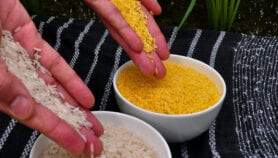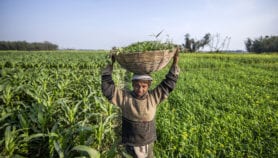By: Katie Mantell
Send to a friend
The details you provide on this page will not be used to send unsolicited email, and will not be sold to a 3rd party. See privacy policy.
The amount of land cultivated with genetically modified (GM) crops increased by 12 per cent worldwide during 2002, according to the preliminary findings of a new survey.
Nearly 6 million farmers in 16 countries planted GM crops over the past year, up from 5 million farmers in 13 countries in 2001. More than three-quarters of these farmers were resource-poor farmers in developing countries.
The figures come from a report to be released later this year by the International Service for the Acquisition of Agri-biotech Applications (ISAAA), an organisation that supports the transfer of biotechnology to developing countries. The survey found that more than one quarter of the world’s GM crops was grown in developing countries.
Clive James, chairman and founder of ISAAA, describes the adoption rate a “a strong vote of confidence in biotech crops”, reflecting farmers’ need for and satisfaction with the technology. “Biotech crops can significantly alter the lives of [resource-poor] farmers, limiting the time they must spend in the field and helping alleviate poverty,” he says.
But Patrick Mulvany, policy adviser at the Intermediate Technology Development Group (ITDG), denies that poor farmers are in fact turning in droves to GM crops.
“The figures are skewed by huge numbers of farmers planting GM cotton in China,” he says. Science has a valuable contribution to make, but “a reductionist approach of using a single gene to address problems of complex ecosystems” is not the answer, he says.
The United States, Argentina, Canada and China continue to be the leading growers of GM crops, with more than half of China’s cotton crop being GM for the first time, according to the ISAAA survey.
© SciDev.Net 2003













